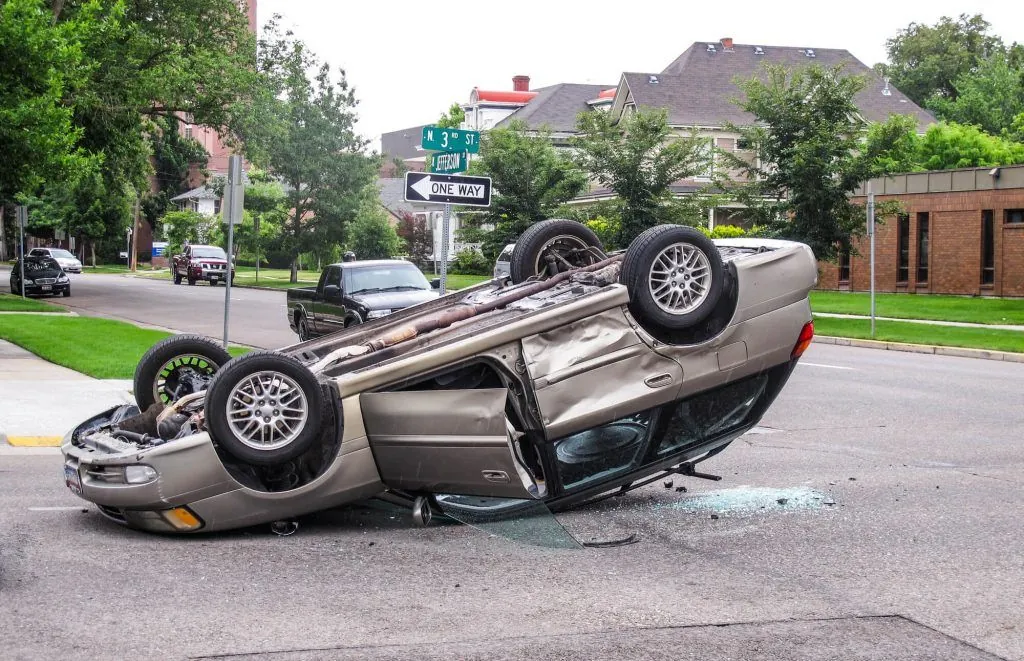Driver and Passenger Experiences in Rollover Crashes
I’m Ed Smith, a Modesto Personal Injury Lawyer. Different types of car accidents can happen, and one of the most worrisome types regarding injury occurrence and severity is a rollover crash. These types of accidents have been studied extensively to determine what happens inside the vehicle and how they can be prevented.
A rollover crash is a particularly serious accident where a vehicle performs one or more flips as it rolls across the road or down a hill. A car may only make a one-quarter turn onto its side, or it could make a complete rotation where it lands back on its wheels. A rollover crash can also lead to multiple rotations, creating a particularly harrowing experience for whoever is inside the vehicle. Regardless of how it happens, it typically results in substantial damage to a car and can lead to serious injuries for the occupants.
How do Rollover Crashes Happen?
Several different mechanisms can cause a rollover crash. The first is when someone takes a curve too quickly in a single vehicle accident. In this situation, the forces cause the wheels to leave the curve and fly off of the turn, leading to a rollover crash. If multiple rotations occur, the occupants could strike their head on the roof, leading to a traumatic brain injury. Rollover crashes can also involve numerous vehicles where one car hits another on the side. One vehicle is typically lower to the ground than the other, so the impact is at the bottom of the other vehicle. This lifts up the other car, causing a rollover collision. These accidents can also lead to various types of bone fractures that could require medical attention. Because of the severity of these collisions, rollover accidents have been studied thoroughly.
The Study Overview
A team of researchers conducted an extensive review of records concerning rollover accidents over a period of several years. The researchers identified almost 300 rollover accidents involving over 300 people. They excluded any vehicles that were made before the year 1990. They viewed different aspects of the accidents including:
- Whether or not the people in the car wore their seat belts.
- Whether or not anyone was ejected from the vehicle during the accident.
- What type of injuries were sustained and how severe they were.
- Where the injuries came from.
- How much the roof was deformed by the accident.
- How many quarter-turns the car made as it was rolling over.
The Results of the Study
The study provided some interesting information regarding the type of rollover accidents and the complexity of the injuries that can occur to the people inside the vehicle. The research shows that different aspects of rollover accidents can be quantified objectively. The study found that injuries with the roof involved could be particularly severe because these were often head injuries that can lead to brain damage. Furthermore, the study also identified that if the rollover accident was “arrested,” this could lead to significantly more roof deformation which was associated with a higher rate of injury. An “arrested” rollover crash is one where the rolling was stopped when the car collided with another object or vehicle. On the other hand, non-arrested rollover crashes did not seem to have any correlation between the severity of the injury and the amount of roof deformation. This study is an essential first step in understanding more about rollover collisions.
Personal Injury & Car Accident Lawyers in Modesto
I’m Ed Smith, a Modesto Personal Injury Lawyer. If you’ve been injured in a rollover accident, call me for free, friendly advice at (209) 227-1931 or (800) 404-5400.
I am a part of the Million Dollar Advocates Forum for the California region.
You can read through some of our verdicts and settlements cases.
See what our clients are saying about us on Avvo, Yelp, and Google.
Image Attribution: depositphotos.com
:dr cha [cs 654] cv

